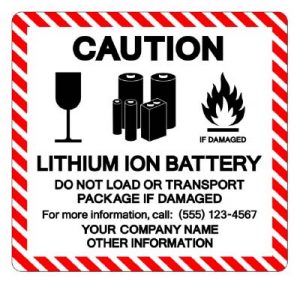 Many electronic devices use lithium-ion batteries. These include laptops, cellphones, tablets, cameras, and even power tools. Popular micro-mobility devices such as hover boards, E-scooters, and E-bikes have become increasingly popular and have this type of battery, as do electric vehicles.
Many electronic devices use lithium-ion batteries. These include laptops, cellphones, tablets, cameras, and even power tools. Popular micro-mobility devices such as hover boards, E-scooters, and E-bikes have become increasingly popular and have this type of battery, as do electric vehicles.
Lithium-ion batteries contain one or multiple lithium cells connected electrically. When the battery is charged, these cells are electrically connected in an electrolyte solution. This solution is a combination of solvents with an electrolyte salt. Some of these electrolytes are flammable liquids. These types of batteries are efficient, but also less stable than single-cell batteries because they convert chemical potential energy into electrical energy through use of lithium ions or metal. They can overheat, causing thermal runaway, which can lead to smoke, an explosion or a fire.
Here are some Do’s and Don’ts when it comes to lithium-ion batteries:
- DO Take batteries to be recycled at a designated recycling center.
- DO Use a battery storage tray to store unused batteries or keep batteries separated
- DO Charge batteries at room temperature.
- DO Use the charging cable that came with the device or a quality replacement part from the manufacturer.
- DO Charge batteries in a well-ventilated space.
- DO Make sure products comply with UL fire safety standards.
- DO Have repairs to damaged devices done by a qualified professional.
- DON’T Put lithium-ion batteries in the trash.
- DON’T Pile up batteries.
- DON’T Store batteries near sources of heat or flame.
- DON’T Overcharge batteries or keep them plugged in overnight.
- DON’T Charge multiple devices at once.
- DON’T Keep extension cords plugged in for over 30 days.
BE AWARE…LITHIUM-ION BATTERIES CAN START FIRES!
Download flyer: STOTW_1224_Safety_with_Lithium-ion_Batteries Download Spanish flyer: STOTW_1224_Safety_with_Lithium-ion_Batteries_esp

